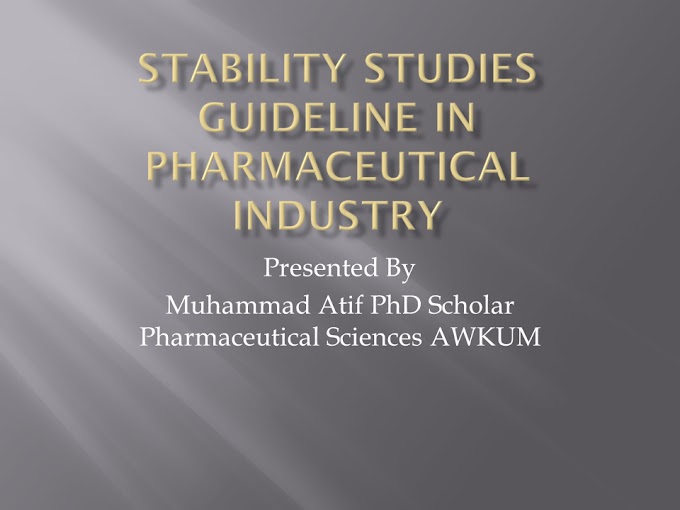Cardiogenic
shock
Overview
Cardiogenic shock is a life-threatening
condition in which your heart suddenly can't pump enough blood to meet your
body's needs. The condition is most often caused by a severe heart attack, but
not everyone who has a heart attack has cardiogenic shock.
Cardiogenic shock is rare. It's often deadly
if not treated immediately. When treated immediately, about half the people who
develop the condition survive.
Symptoms
Cardiogenic shock signs and symptoms include:
·
Rapid breathing
·
Severe shortness of
breath
·
Sudden, rapid
heartbeat (tachycardia)
·
Loss of consciousness
·
Weak pulse
·
Low blood pressure
(hypotension)
·
Sweating
·
Pale skin
·
Cold hands or feet
·
Urinating less than
normal or not at all
Symptoms of a heart
attack
Because cardiogenic shock usually occurs in
people who are having a severe heart attack, it's important to know the signs
and symptoms of a heart attack. These include:
·
Pressure, fullness or
a squeezing pain in the center of your chest that lasts for more than a few
minutes
·
Pain spreading to your
shoulder, one or both of your arms, your back, or even your teeth and jaw
·
Increasing episodes of
chest pain
·
Shortness of breath
·
Sweating
·
Lightheadedness or
sudden dizziness
·
Nausea and vomiting
Seek medical attention quickly when having
these signs or symptoms to decrease your risk of developing cardiogenic shock.
When to see a doctor
Getting heart attack treatment quickly
improves your chance of survival and reduces damage to your heart. If you're
having symptoms of a heart attack, call 911 or other emergency medical services
for help. If you don't have access to emergency medical services, have someone
drive you to the nearest hospital. Don't drive yourself.
Causes
In most cases, a lack of oxygen to your heart,
usually from a heart attack, damages its main pumping chamber (left ventricle).
Without oxygen-rich blood flowing to that area of your heart, the heart muscle
can weaken and go into cardiogenic shock.
Rarely, damage to your heart's right
ventricle, which sends blood to your lungs to get oxygen, leads to cardiogenic
shock.
Other possible causes of cardiogenic shock
include:
·
Inflammation of the
heart muscle (myocarditis)
·
Infection of the heart
valves (endocarditis)
·
Weakened heart from
any cause
·
Drug overdoses or
poisoning with substances that can affect your heart's pumping ability
Risk factors
If you have a heart attack, your risk of
developing cardiogenic shock increases if you:
·
Are older
·
Have a history of
heart failure or heart attack
·
Have blockages
(coronary artery disease) in several of your heart's main arteries
·
Have diabetes or high
blood pressure
·
Are female
Complications
If not treated immediately, cardiogenic shock
can lead to death. Another serious complication is damage to your liver,
kidneys or other organs from lack of oxygen, which can be permanent.
Prevention
The best way to prevent cardiogenic shock is
to make lifestyle changes to keep your heart healthy and your blood pressure in
check.
·
Don't
smoke, and avoid secondhand smoke. If you smoke, the best way to reduce your heart attack
risk is to quit.
·
Maintain
a healthy weight. Being overweight
contributes to other risk factors for heart attack and cardiogenic shock, such
as high blood pressure, cardiovascular disease and diabetes. Losing just 10
pounds (4.5 kilograms) can lower blood pressure and improve cholesterol levels.
·
Eat
less cholesterol and saturated fat. Limiting these, especially saturated fat, can reduce your
risk of heart disease. Avoid trans fats.
·
Use
less salt. Too much salt
(sodium) leads to fluid buildup in the body, which can strain the heart. Aim
for less than 2,300 milligrams (mg) a day of sodium. Salt can be found in many
canned and processed goods, so it's a good idea to check food labels.
·
Cut
back on sugar. This will help
you avoid nutrient-poor calories and help you maintain a healthy weight.
·
Limit
alcohol. If you choose to
drink alcohol, do so in moderation. For healthy adults, that means up to one
drink a day for women and up to two drinks a day for men.
·
Exercise
regularly. Exercise can lower
your blood pressure and improve the overall health of your blood vessels and
heart. Get at least 150 minutes of moderate aerobic activity or 75 minutes of
vigorous aerobic activity a week, or a combination of moderate and vigorous
activity. It's recommended to spread out this exercise during the course of a
week. Greater amounts of exercise will provide even greater health benefits.
If you have a heart attack, quick action can
help prevent cardiogenic shock. Seek emergency medical help if you think you're
having a heart attack.
Diagnosis
Cardiogenic shock is usually diagnosed in an
emergency setting. Doctors will check for signs and symptoms of shock, and will
then perform tests to find the cause. Tests might include:
·
Blood
pressure measurement. People in shock
have very low blood pressure.
·
Electrocardiogram
(ECG or EKG). This quick,
noninvasive test records the electrical activity of your heart using electrodes
attached to your skin. If you have damaged heart muscle or fluid buildup around
your heart, the heart won't send electrical signals normally.
·
Chest
X-ray. A chest X-ray
shows the size and shape of your heart and whether there's fluid in your lungs.
·
Blood
tests. You'll have
blood drawn to check for organ damage, infection and heart attack. An arterial
blood gas test might be done to measure oxygen in your blood.
·
Echocardiogram. Sound waves produce an image of your
heart. This test can help identify damage from a heart attack.
·
Cardiac
catheterization (angiogram). This test can reveal blocked or narrowed arteries. A
doctor inserts a long, thin tube (catheter) through an artery in your leg or
wrist and guides it to your heart. Dye flows through the catheter, making your
arteries more easily seen on X-ray.
Treatment
Cardiogenic shock treatment focuses on
reducing the damage from lack of oxygen to your heart muscle and other organs.
Emergency life support
Most people who have cardiogenic shock need
extra oxygen. If necessary, you'll be connected to a breathing machine
(ventilator). You'll receive medications and fluid through an IV line in your
arm.
Medications
Fluids and plasma are given through an IV.
Medications to treat cardiogenic shock are given to increase your heart's
pumping ability and reduce the risk of blood clots.
·
Vasopressors. These medications are used to treat low
blood pressure. They include dopamine, epinephrine (Adrenaline, Auvi-Q),
norepinephrine (Levophed) and others.
·
Inotropic
agents. These
medications, which help improve the pumping function of the heart, may be given
until other treatments start to work. They include dobutamine, dopamine and
milrinone.
·
Aspirin. Aspirin is usually given immediately to
reduce blood clotting and keep blood moving through a narrowed artery. Take an
aspirin yourself while waiting for help to arrive only if your doctor has
previously told you to do so for symptoms of a heart attack.
·
Antiplatelet
medication. Emergency room
doctors might give you drugs similar to aspirin to help prevent new clots from
forming. These medications include clopidogrel (Plavix), tirofiban (Aggrastat)
and eptifibatide (Integrilin).
·
Other
blood-thinning medications. You'll
likely be given other medications, such as heparin, to make your blood less
likely to form clots. IV or injectable heparin usually is given during the
first few days after a heart attack.
Surgeries and other
procedures
Medical procedures to treat cardiogenic shock
usually focus on restoring blood flow through your heart. They include:
·
Angioplasty
and stenting. If a blockage is
found during a cardiac catheterization, your doctor can insert a long, thin
tube (catheter) equipped with a special balloon through an artery, usually in
your leg, to a blocked artery in your heart. Once in position, the balloon is
briefly inflated to open the blockage.
A metal mesh stent might be inserted into the artery to keep it
open over time. In most cases, you doctor will place a stent coated with a
slow-releasing medication to help keep your artery open.
·
Balloon
pump. Your doctor
inserts a balloon pump in the main artery off of your heart (aorta). The pump
inflates and deflates within the aorta, helping blood flow and taking some of
the workload off your heart.
·
Extracorporeal
membrane oxygenation (ECMO). ECMO helps
improve blood flow and supplies oxygen to the body. Blood is pumped outside of
your body to a heart-lung machine that removes carbon dioxide and sends
oxygen-filled blood back to tissues in the body.
If medications and other procedures don't work
to treat cardiogenic shock, your doctor might recommend surgery.
·
Coronary
artery bypass surgery. This
surgery uses a healthy blood vessel in your leg, arm or chest to create a new
pathway for blood so it can flow around a blocked or narrowed artery. Your
doctor might suggest this surgery after your heart has had time to recover from
your heart attack. Occasionally, bypass surgery is done as an emergency
treatment.
·
Surgery
to repair an injury to your heart. Sometimes an injury, such as a tear in one of your heart's
chambers or a damaged heart valve, can cause cardiogenic shock. Surgery might
correct the problem.
·
Ventricular
assist device (VAD). A mechanical
device can be implanted into the abdomen and attached to the heart to help it
pump. A VAD might extend and improve the lives of some people with
end-stage heart failure who are waiting for new hearts or aren't able to have a
heart transplant.
·
Heart
transplant. If your heart is
so damaged that no other treatments work, a heart transplant may be a last
resort.





0 Comments